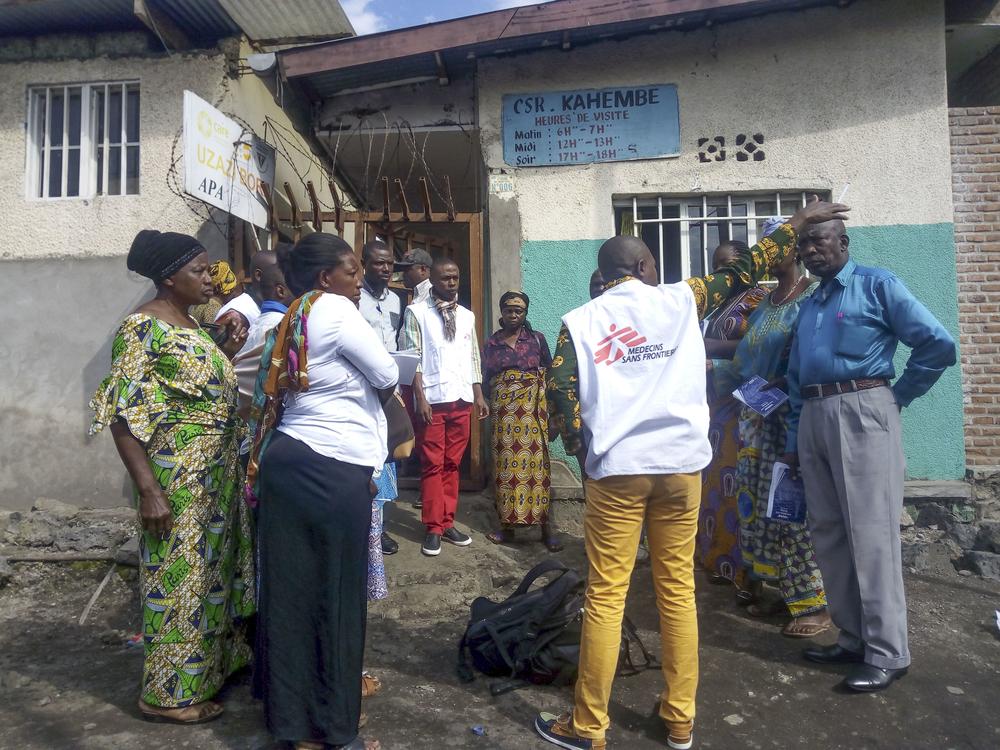Medecins Sans Frontieres (MSF) is a partner in a consortium of international organisations that initiated this clinical study, and will manage its implementation in collaboration with DRC’s Ministry of Health and the Institut National de Recherche Biomedicale.
MSF community engagement teams have been meeting with people in Majengo and Kahembe health districts in Goma, to share information about the vaccine and answer their questions. These two districts have been identified in collaboration with health authorities as the first to be offered the vaccine.
Trained immunisation teams will initially administer the vaccine in two sites, with four more to be set up in the coming weeks. It will be offered to adults and to children aged one and older according to the study protocol, and initially targets 50,000 people over a four-month period.
John Johnson is MSF’s Project Lead for this vaccination and was recently in Goma to help with the launch.
Why do we need to introduce a second Ebola vaccine?
Vaccination is one of the key tools to protect people from Ebola virus. Merck’s rVSV-ZEBOV vaccine has been proven to be effective and has become a valuable resource in the fight against the epidemic. The introduction of a second vaccine is not meant to replace the rVSV vaccine, but to complement it and hopefully provide us with an additional tool in the fight against future Ebola outbreaks. As this is the tenth outbreak of Ebola in the DRC, it makes sense to work towards having another vaccine option introduced into the country.

What are the specific objectives of introducing a second vaccine?
The primary objective of the study is to gain data on effectiveness of the vaccine in a real-world setting. Laboratory studies show that this vaccine generates an increased immune response against Ebola, but the only way to confirm its effectiveness outside of the lab is to introduce the vaccine during an epidemic. Simply put, the goal of this study is to prove that the vaccine will protect people during an actual outbreak.
There are other reasons to study this vaccine in a real-world setting. For example, to learn how the vaccine will be accepted by the population, to test the feasibility of deploying a two-dose regimen during an epidemic, and to see if people will return on time for their second dose. And though the J&J vaccine has a good safety record in earlier human studies, we will of course continue to document safety data. Additionally, the further introduction and examination of this vaccine will facilitate its use in future outbreaks.
Why was this particular vaccine chosen? How do you know it is safe?
The vaccine was endorsed in the interim recommendations by the SAGE group of experts on immunisation in May of 2019. It was chosen because it has the most potential among other candidate vaccines. Also because it had already passed phase I and II clinical trials, with over 6000 human volunteers participating. These studies showed that the vaccine has an excellent safety profile.
How does the decrease in the number of new Ebola cases impact the study?
The reduction in the number of new cases being reported each week is great news of course, however that will make it more difficult to establish the effectiveness of the vaccine. We aim to offer this vaccine to populations who live near areas of ongoing Ebola transmission and we hope this will protect communities at risk. If the outbreak does continue and eventually arrives in areas where we have been vaccinated, we would then be able to confirm if individuals who had been vaccinated were protected. This would be both a victory for the population as well as an indication of the effectiveness of the vaccine.
![New Ebola Vaccine [Photo: Gabriella Bianchi/MSF] New Ebola Vaccine [Photo: Gabriella Bianchi/MSF]](/sites/default/files/styles/hero_desktop/public/msfimages/news/msf293004_medium.jpg?itok=QkTQYN9E)